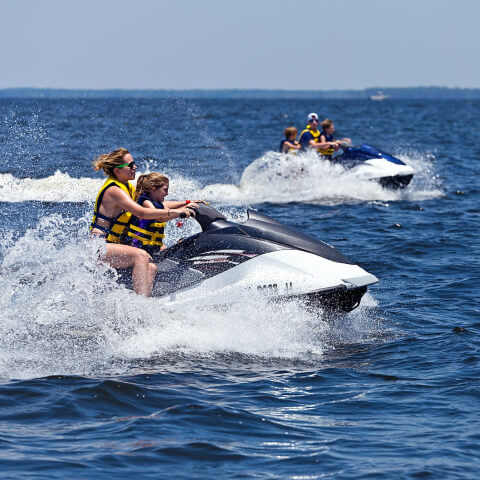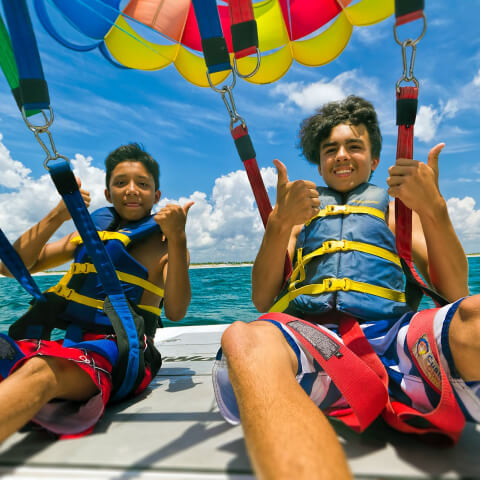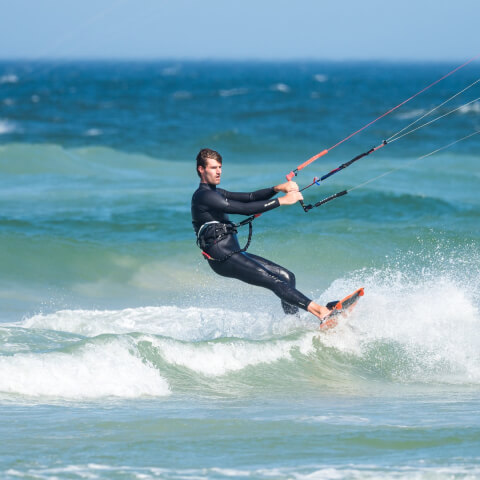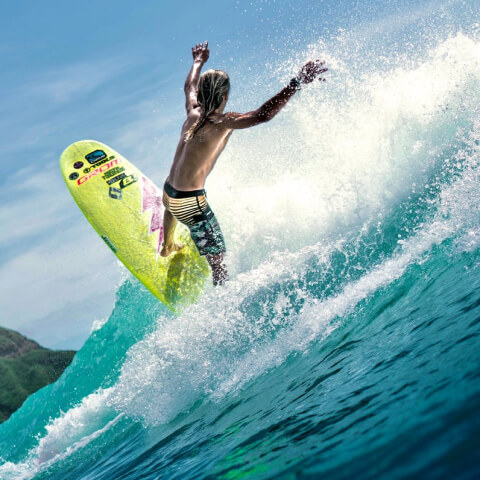Open water swimming guide
01.
Exploring Open Water Swimming
Venturing into open water swimming can be an exhilarating yet daunting experience. Transitioning from the controlled environment of a pool to the unpredictability of natural bodies of water can be intimidating, even for seasoned swimmers. In our comprehensive beginner’s guide to open water swimming, we provide you with practical tips and insights to help you navigate this exciting new realm.
- Physical Benefits: Engage different muscle groups and boost your metabolism by swimming in dynamic, natural environments.
- Mental Clarity: Enjoy the serenity of open water, reducing stress and enhancing mental well-being.
Prepare For
Invest in essential gear like a wetsuit and safety devices, and familiarize yourself with the water conditions before diving in.

02.
Mastering Breathing Techniques
Proper breathing is key to enhancing your swimming efficiency and stamina. Our guide offers simple tips to help you maintain steady breath control during your swim sessions.
- Rhythmic Breathing: Focus on breathing every three strokes to establish a balanced rhythm that improves your endurance.
- Exhalation Control: Exhale fully underwater to maximize oxygen intake with each breath, ensuring consistent energy throughout your swim.
Try This
Incorporate breathing drills into your warm-up routine to practice and perfect your technique.

03.
Improving Your Stroke Technique
Refining your stroke is essential for faster, more efficient swimming. Follow these quick tips to enhance your form and reduce drag.
- Streamline Your Body: Keep your body aligned to minimize resistance and maintain speed.
- Arm Position: Ensure your arm enters the water with fingers pointed forward, reducing drag and maximizing propulsion.
Get Started
Start with achievable goals and track your progress to stay motivated and see results.

04.
Building Swim Endurance
Endurance is vital for competitive swimmers and long-distance enthusiasts alike. Learn how to build your stamina effectively with targeted workouts.
- Interval Training: Alternate between high-intensity sprints and moderate-paced laps to build endurance gradually.
- Consistent Practice: Dedicate regular sessions to endurance training, gradually increasing your swim distances over time.
Get Started
Start with achievable goals and track your progress to stay motivated and see results.

Preparing for Your First Open Water Swim
- Choosing the Right Location: When preparing for your first open water swim, selecting the right location is crucial for a safe and enjoyable experience. Look for designated swimming areas with lifeguards present if possible. Opt for calm waters with minimal boat traffic to enhance your comfort and safety while swimming. Checking local swim guides or online resources can help you find suitable open water swimming locations that meet your needs.
- Understanding Weather and Water Conditions: Understanding the weather and water conditions is essential before embarking on your first open water swim. Check the weather forecast for the day of your swim and be wary of any potential changes. Be aware of factors such as water temperature, currents, and waves, as they can significantly impact your swimming experience. Consider practicing in various conditions to familiarise yourself with different scenarios and build confidence in navigating open water challenges.
Training Tips for Open Water Swimmers
- Building Stamina and Endurance: To excel in open water swimming, it’s crucial to build stamina and endurance in the pool before heading into the open ocean. Ocean swims are typically longer and more challenging due to shifting conditions. A mile in the ocean can be significantly more demanding than a mile in the pool. Therefore, it’s recommended to swim at least two to three times your target open water distance nonstop in the pool. This preparation ensures that fatigue won’t hinder your performance when facing the waves during your swim. If you feel overtired during practice swims, implement a technique known as “resting in motion”. This involves maintaining a consistent swimming tempo while reducing the forcefulness of each stroke, allowing you to take a brief rest without coming to a complete stop.
- Navigation Skills in Open Water: Navigating open water can be tricky, especially when the visibility is compromised. To simulate low-visibility conditions, try swimming with your eyes closed for short intervals while maintaining your stroke count. Lift your goggles, swim a few strokes, pause and tread water, then resume swimming with your goggles back on. This exercise helps you learn to swim forward even with limited or no visibility without sacrificing technique and breath control. Remember, most open waters are cloudier than pool water, so practicing navigation skills without visual cues is essential for a successful open water swim.
Safety Measures for Open Water Swimming
- Understanding Rip Currents and Tides: When it comes to open water swimming, understanding rip currents and tides is crucial for safety. Rip currents are powerful columns of water that move away from the shore, pulling swimmers out to sea. If caught in a rip current, it’s essential to remain calm and go with the flow until it weakens. Once this happens, swim parallel to the shore to escape its pull. Attempting to swim directly against the rip current is futile and exhausting. Similarly, being aware of tidal changes is important, as sudden tides can be dangerous. Getting familiar with the water conditions and tide cycles of the area you’re swimming in can prevent potential disasters.
- Swimming with a Buddy System: One of the best safety measures for open water swimming is to swim with a buddy. Swimming with a partner provides an extra layer of safety, as you can look out for each other and assist in case of emergencies. In case one swimmer gets into difficulty, the other can call for help or provide support. Furthermore, swimming with a buddy can enhance the overall swimming experience by making it more enjoyable and social. Remember, safety should always come first, and having a swim buddy can significantly reduce the risks associated with open water swimming.
What People Say
“The Open Water Swimming Guide was a game-changer for me. It helped me transition from pool swimming to open water with confidence. The tips on gear and safety were particularly helpful—I felt prepared and excited for my first open water swim!”
-JANE WILLIAMS
“As someone new to open water swimming, I found the guide incredibly insightful. The advice on managing different water conditions and understanding rip currents was invaluable. I highly recommend this guide to anyone looking to explore open water swimming safely.”
-MICHAEL THOMPSON
“This guide is perfect for both beginners and experienced swimmers. I loved the section on mental health benefits—swimming in open water has been such a therapeutic experience for me. The guide provided practical tips that made my swims more enjoyable and stress-free.”